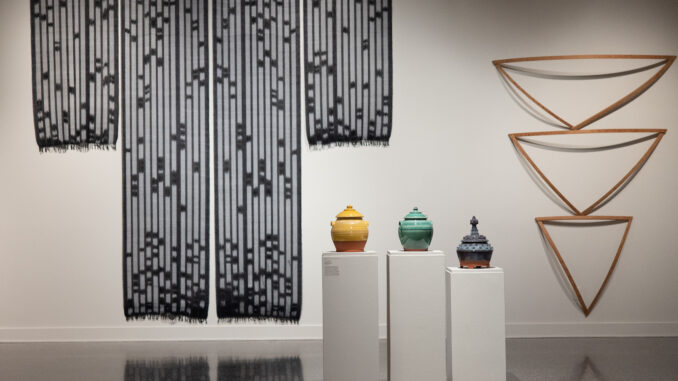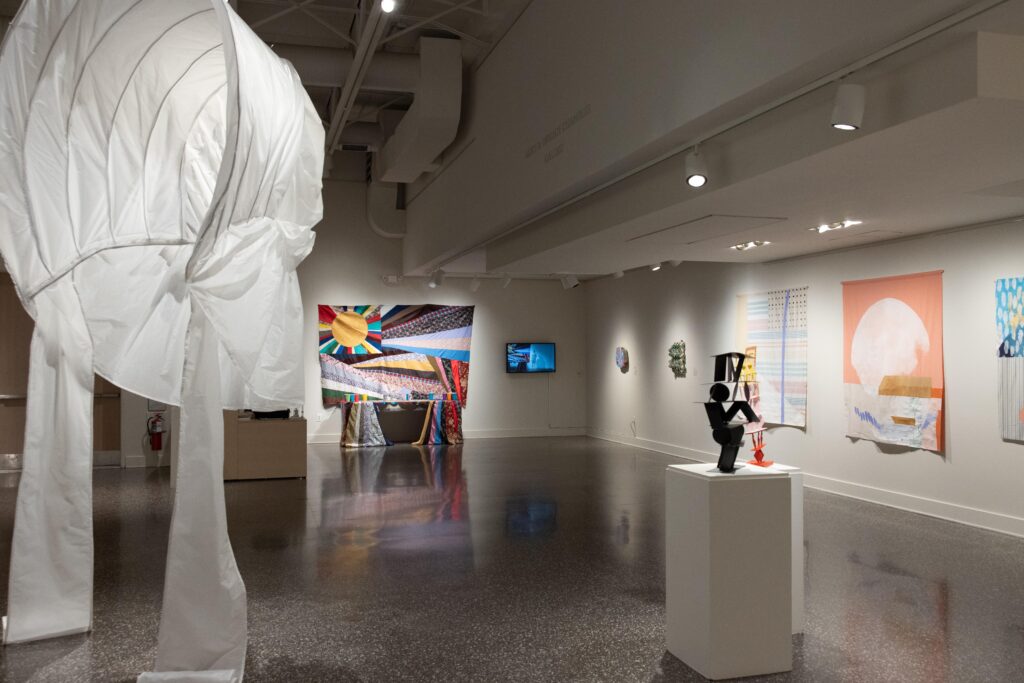
When people hear the word “folk art,” a lot of things run through their mind. They think of homemade pottery painted bright colors, woven quilts and clothes, wood carvings crafted by seasoned artisans. They think of their home, their community and family members that show off their local pride and history through this art.
This semester, the Samuel Dorsky Museum of Art is presenting a slice of the Hudson Valley’s own brand of contemporary folk art with their exhibit, “New Folk.” The exhibit was curated by Anna Conlan, the curator and exhibitions manager of the Dorsky.
“New Folk showcases artwork that distinctively captures the spirit of contemporary folk practice in the Hudson Valley today,” the New Folk Gallery Guide states. “It offers a vision of what folk art can be — highly skilled, locally-sourced, idiosyncratic and resourceful.”
True to the description, Conlan received over 200 submissions for the exhibition from local artists in the Hudson Valley, 29 of which made the cut and are on display at the Dorsky. While each submission was unique, there were several common threads between the works that gave Conlan a clear vision. Some of these threads were rather fantastical.
“Some of the things that came through, people connected it to folklore, and myths, and magic and kinda witchy stuff,” Conlan said. Other threads, however, were more grounded in the history of the area.
“Another [theme] that came through are artists who have moved to the Hudson Valley, artists who are new folk, are engaging with the history of the Hudson Valley and looking at art, the heritage of this region, discovering for themselves as new people to the Hudson Valley,” Conlan said. “Also, there’s the theme of some new folk coming to the Hudson Valley and bringing with them cultural traditions. That was another thing, the memory of the traditions the new folk carry with them.”
The process of setting up and even selecting artwork for the exhibit was hampered by the COVID-19 pandemic. For a while, according to Conlan, it was uncertain whether or not she — and the Dorsky — would proceed with the exhibit.

“Usually this exhibition opens in June, and then it’s open throughout the whole of the summer,” Conlan said. “Because of COVID, we remained closed until the campus reopened in fall. We had to decide if we are going to still go ahead with the exhibition.”
Ultimately, the Dorsky decided to go forward with the exhibition, but modified how it was going to install the artwork over the summer. Normally, the installation process would take roughly two to three days, with artists arriving and either leaving their piece to be installed or assisting with the installation process.
However, due to the pandemic, the process was extended to roughly three weeks, with about three artists coming in a day to limit the amount of contact between people. Social distancing was maintained, and while the Dorsky is a fairly large space, it’s still an enclosed one, so masks were worn at all times. According to Conlan, the Dorsky staff even set up their offices outside to work in the fresh air, a silver lining given the irregular circumstances. For the most part, the move for the pieces into the Dorsky was an efficient one.
“It worked great!” Conlan said. “The campus was quiet and we could take our time, and I think that was helpful because it’s quite a lot of work with 29 artists, which for this exhibition is quite large.”
In addition to the installation process, Conlan’s process of examining the works was also altered. Due to the pandemic, gallery spaces were closed to prevent the spread of COVID and to meet face-to-face could pose some risk, so Conlan viewed some of the pieces as part of virtual exhibitions.
“I [also] did one, outdoor, masked studio visit,” Conlan said. “But for the most part, when works arrived in boxes when the artist brought it into the gallery, that’s the first time I’m seeing them in person.”
Although the pandemic has posed some unique challenges to the Dorsky, “New Folk” was put together successfully, and opened to the public on Sept. 12, alongside its fellow exhibitions, “Dos Mundos: (Re)Constructing Narratives“ and “We Wear the Mask: Race and Representation in the Dorsky Museum Permanent Collection.”
For Conlan, “New Folk” provided the opportunity to explore the contemporary side of folk art and share that with the viewing public.
“It’s hard to have a strict definition of what folk art is,” Conland said. “For me, I think it’s a crossover between craft, outsider art, artisanal craft making, domestic creativity [and] taking a utilitarian object and making it beautiful.”
The exhibition will be open until Oct. 25. Museum hours and guidelines for visiting can be found online.
